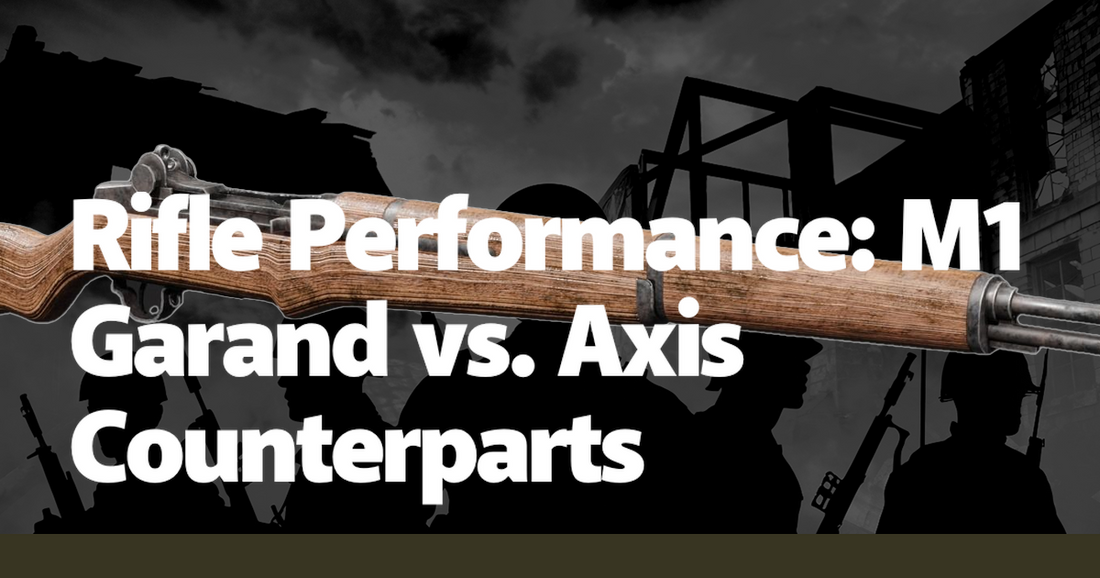In the annals of World War II, few rifles have achieved the legendary status of the M1 Garand. As the standard-issue rifle for the U.S. military, it was lauded for its reliability, firepower, and innovative design. But to truly appreciate its place in history, one must compare it to the rifles wielded by the Axis powers. The German Karabiner 98k, the Japanese Arisaka, and the Italian Carcano each had their own distinct characteristics, strengths, and weaknesses. Through this comparison, we can gain a deeper understanding of the technological and tactical landscape of the time.
The M1 Garand, designed by John Garand and adopted by the U.S. military in 1936, was revolutionary for its semi-automatic operation. Unlike the bolt-action rifles of its Axis counterparts, the M1 Garand allowed soldiers to fire eight rounds without manually cycling the action. This gave American troops a significant advantage in terms of fire rate and ease of use. Anecdotes from veterans often highlight the Garand's ability to maintain a high volume of fire in intense combat situations, a feature that was particularly advantageous during engagements such as the Battle of the Bulge.
On the other side of the battlefield, the German Karabiner 98k, or K98k, was the primary infantry rifle for the Wehrmacht. Based on the earlier Gewehr 98, it was a bolt-action rifle that fired a powerful 7.92×57mm Mauser cartridge. While the K98k was renowned for its accuracy and ruggedness, its bolt-action mechanism required soldiers to manually cycle the bolt after each shot, slowing their rate of fire. This limitation became evident during close-quarters combat, where the ability to quickly follow up shots could mean the difference between life and death. However, the K98k's precision made it a favorite among German snipers, who valued its long-range capabilities.
In the Pacific Theater, Japanese soldiers primarily used the Arisaka rifle. The Type 99 Arisaka, introduced in 1939, was a bolt-action rifle that fired the 7.7×58mm Arisaka cartridge. It was known for its durability and ability to function in harsh environments, a crucial feature given the challenging conditions of the Pacific islands. However, like the K98k, its bolt-action design limited its rate of fire. Stories from American Marines often recount the shock of facing Japanese soldiers who, despite being outgunned, fought with tenacity and made effective use of their Arisaka rifles in ambushes and defensive positions.
Meanwhile, Italian forces were equipped with the Carcano rifle, specifically the M91/38 Carcano. This bolt-action rifle fired a 6.5×52mm cartridge, which was less powerful than the cartridges used by the M1 Garand, K98k, and Arisaka. The Carcano's lighter recoil made it easier to handle, but its stopping power was often criticized. Italian soldiers found themselves at a disadvantage in firepower and range, particularly when facing Allied forces equipped with the M1 Garand. Despite these shortcomings, the Carcano was noted for its straightforward design and ease of production, which allowed Italy to arm its troops quickly and efficiently.
Comparing the M1 Garand to these Axis rifles reveals a clear technological edge for the American forces. The semi-automatic operation of the Garand not only increased the rate of fire but also reduced the physical strain on soldiers, who did not have to manually cycle the bolt. This advantage was particularly evident in prolonged engagements, where the ability to maintain sustained fire could suppress enemy positions and provide cover for advancing troops. Veterans often described the psychological impact of the Garand's rapid fire, which could demoralize enemy soldiers accustomed to the slower pace of bolt-action rifles.
However, the superiority of the M1 Garand was not just a matter of rate of fire. Its design also incorporated features that enhanced its reliability and ease of maintenance. The Garand's gas-operated system was less prone to jamming compared to the bolt-action mechanisms, which could become fouled by dirt and debris. This reliability was crucial in the varied and often harsh conditions of World War II battlefields, from the frozen forests of Europe to the humid jungles of the Pacific. The Garand's robust construction and simple field-stripping process made it a favorite among soldiers who needed a dependable weapon in the heat of battle.
In conclusion, the M1 Garand stood out among its Axis counterparts due to its semi-automatic operation, reliability, and overall effectiveness in combat. While the K98k, Arisaka, and Carcano each had their own merits, they were ultimately limited by their bolt-action designs and, in some cases, less powerful cartridges. The Garand's technological innovations provided American troops with a distinct advantage, contributing to their success on multiple fronts. The legacy of the M1 Garand is a testament to the importance of firearm design in military history, illustrating how advancements in technology can shape the outcomes of war and the experiences of those who fight it.

